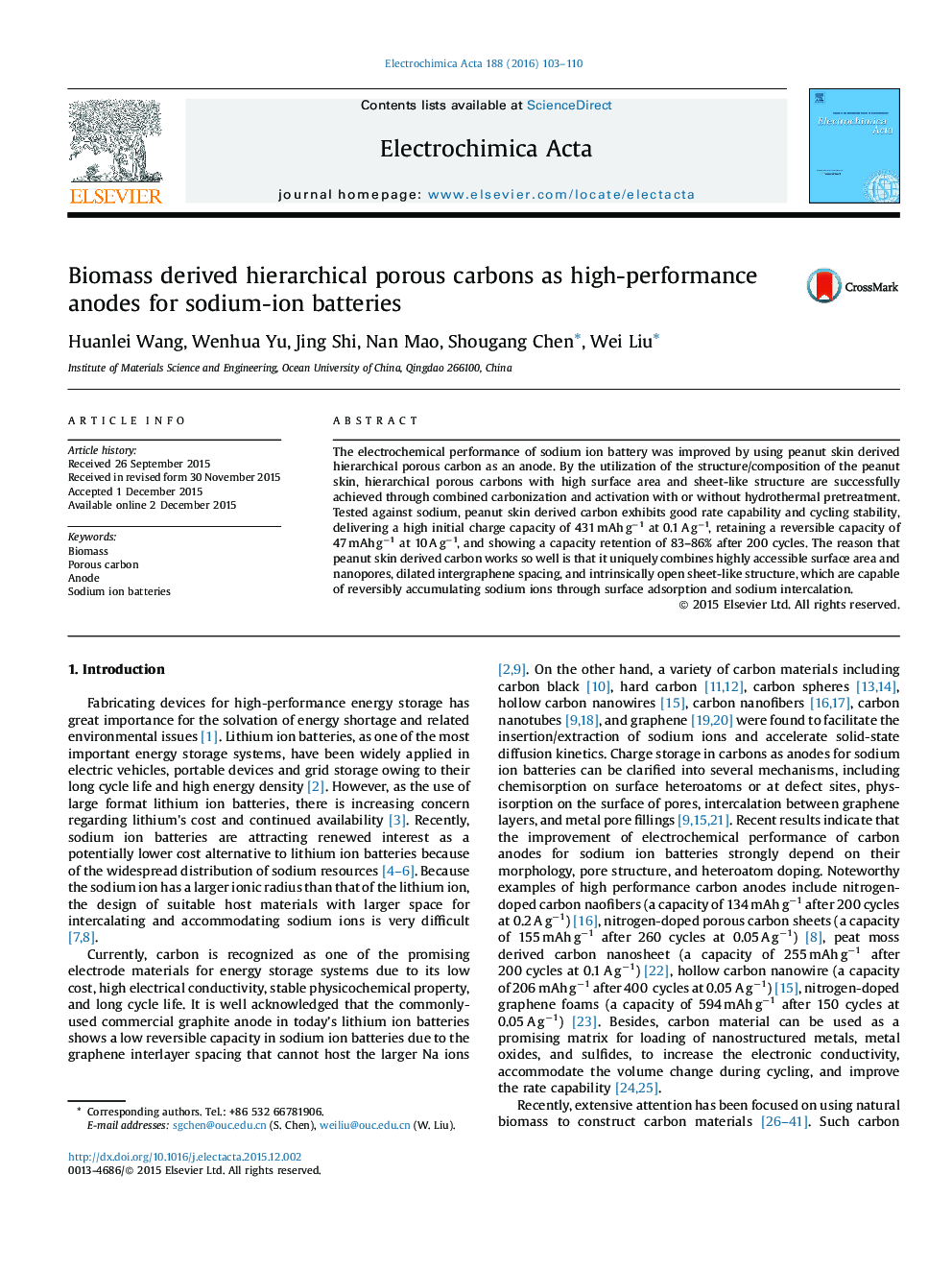| Article ID | Journal | Published Year | Pages | File Type |
|---|---|---|---|---|
| 183337 | Electrochimica Acta | 2016 | 8 Pages |
•Hierarchical porous carbon with sheet-like structure is derived from biomass by using activation method.•The obtained carbon materials display excellent electrochemical performance.•The facile strategy provides a promising route to design advanced anodes for sodium ion batteries.
The electrochemical performance of sodium ion battery was improved by using peanut skin derived hierarchical porous carbon as an anode. By the utilization of the structure/composition of the peanut skin, hierarchical porous carbons with high surface area and sheet-like structure are successfully achieved through combined carbonization and activation with or without hydrothermal pretreatment. Tested against sodium, peanut skin derived carbon exhibits good rate capability and cycling stability, delivering a high initial charge capacity of 431 mAh g−1 at 0.1 A g−1, retaining a reversible capacity of 47 mAh g−1 at 10 A g−1, and showing a capacity retention of 83–86% after 200 cycles. The reason that peanut skin derived carbon works so well is that it uniquely combines highly accessible surface area and nanopores, dilated intergraphene spacing, and intrinsically open sheet-like structure, which are capable of reversibly accumulating sodium ions through surface adsorption and sodium intercalation.
Graphical abstractFigure optionsDownload full-size imageDownload as PowerPoint slide
